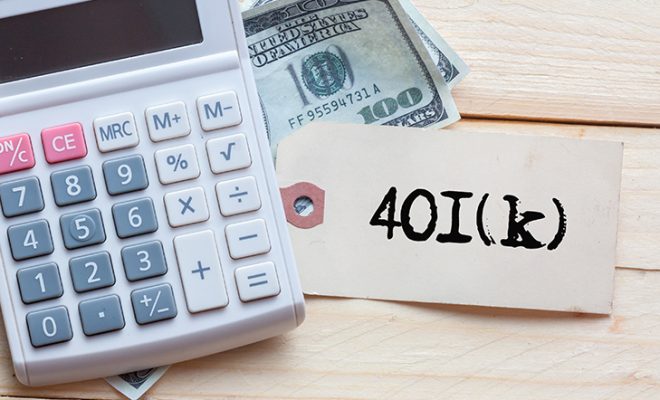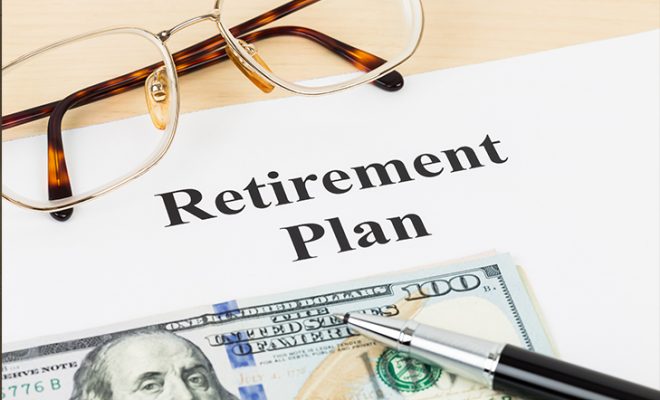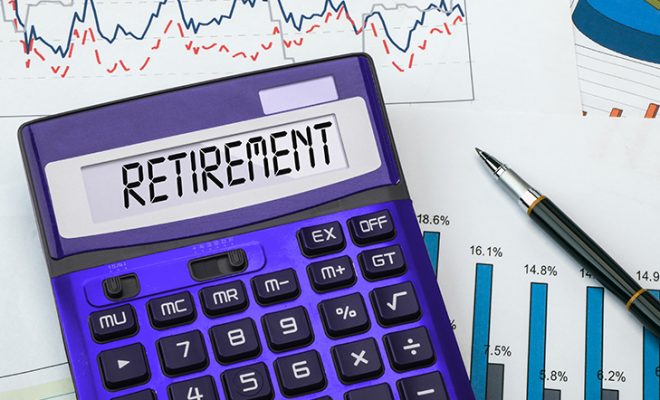The Right Way to Save for Retirement and Avoid Costly Mistakes

It is true that there is no single way to do anything, and multiple approaches can take you to your destination. However, when it comes to retirement, it is better to be safe than sorry and adopt some tried and tested approaches. Certain steps are essential when planning for retirement, and there are also a few common traps that you should avoid.
A financial advisor can guide you through the process of planning for retirement. But, even before that, you can use this article as a checklist to assess your plan and use the right way to save for retirement.
Below are 5 things that can help you save the right way for retirement and eliminate mistakes:
1. Avoid being more cautious than you need to be
While caution is good in life, being overly cautious, especially when it comes to retirement planning, can sometimes do more harm than good. It is important to know when to take a risk and how much of it is appropriate for your financial situation.
Ideally, if you are early in your career or even during your middle working years, your retirement is still years away. Time is one of your biggest advantages during these years. When you have time on your side, you can afford to invest in growth-oriented options like stocks, index funds, and more. These tend to be more volatile in the short term but have historically delivered better returns over the long run and helped counter inflation. Being too conservative at this stage and putting all your money into bonds, savings accounts, etc., can severely limit the growth of your portfolio. This does not mean you eliminate these options. When you are younger, your investment mix should lean more heavily toward equities and growth-oriented assets. Then, as you age and get closer to retirement, you can start shifting gears to more conservative options. That is when you can move gradually toward bonds, Treasury Inflation-Protected Securities (TIPS), or Certificates of Deposits (CDs). This reduces the chance of a market downturn upsetting your plans close to retirement.
Your need to be cautious can also depend on whether or not you are saving for early retirement. For instance, if you plan to retire early, such as in your 40s or 50s, you cannot be conservative in your approach. In this case, you would need to adopt an extremely aggressive investment plan and frugal lifestyle. It is advised to speak to a financial advisor about adjusting your investment mix based on your age, retirement timeline, and risk appetite. You can also use a widely used rule that suggests subtracting your age from 100 to find the percentage of your portfolio that can stay in equities. So, if you are 30, around 70% to 75% of your portfolio could be in stocks, with the rest in more stable assets. This ratio can change over time and evolve with you as you grow older, ensuring you exercise the right amount of caution and put the rest of your money in assets that can bring in growth. However, the rule may not apply to all circumstances. For instance, while it may be useful for traditional retirement timelines, it may not serve your purpose if you plan to retire early, as that may require a relatively more high-risk approach even a few years before retirement.
2. Do not ignore the unexpected expenses that can show up in life
Even if retirement frees you from job-related stress or uncertainties about your salary, life will not really stop throwing surprises your way. A lot of unexpected and costly events can happen during your retirement years and ignoring them can set you back in many ways.
Health emergencies, for instance, can be an expensive surprise even with Medicare or private insurance in place. It is not just your own health you need to consider. Spouses, aging parents, siblings, children, or even pets can need expensive care. And when it is someone you love, you will likely step in without hesitation. So, it is better to plan for that possibility than be caught off guard. Natural disasters like wildfires, floods, hurricanes, or even severe storms can cause damage to your home, car, or business. These events are hard to predict, but preparing for them is essential and, to some degree, possible. Make sure you review your homeowner’s insurance, flood protection, and car coverage regularly. Adult children can also sometimes need support, such as a temporary loan, help overcoming a bad financial decision, or covering college tuition for a grandchild. If you have not planned for this, dipping into your retirement savings might be the only solution, which can hurt your financial security.
The best way to prepare for the unexpected is to build and maintain an emergency fund. This fund should be separate from your investment portfolio and should ideally cover six to eight months of living expenses. It should be easily accessible but not so tempting that you use it for everyday spending. Insurance is another great tool to prepare for emergencies. Comprehensive health coverage, long-term care insurance, and property protection can save you from large unplanned expenses.
SPONSORED WISERADVISOR
3. Not factoring in the specifics and keeping a vague savings goal
Instead of keeping a vague retirement goal and following general rules like saving 70% to 80% of your pre-retirement income, it may benefit you more to focus on the specifics of your financial needs. A generalized approach can give you a false sense of security because it skips over the most important question, that is – what are you actually saving for?
The expenses you face in retirement are not likely to be uniform, and they will not all show up at once. That is why it is essential to break down your retirement goals into specific categories. This can help you understand how much you need and when you will need it. For instance, healthcare expenses in retirement can take up a lot of your savings. Therefore, it is not enough to assume you will have a monthly budget that somehow takes care of it. You need to prepare for it separately. This can be done by building a healthcare fund that considers insurance premiums, emergency treatments, prescription drugs, dental care, vision care, etc. Also, factor in long-term care, which you may need later in life. You need to save for general healthcare and long-term care separately because their timing and costs can be very different. You also need to account for specific lifestyle expenses. For instance, housing expenses, such as mortgage, property taxes, repairs, and more can add up to a substantial figure. Travel expenses can also take up a lot of your budget and need to be planned for. You also need to prepare for smaller, everyday choices, such as dining out, entertainment, and more. If you value these experiences, you must plan for them separately.
It is important to avoid lumping everything into a single savings target. The average retirement savings that you are preparing for may cover some of your needs, but it may also fall short in front of certain costs. Hence, divide your retirement plan into separate categories based on your unique needs. There can be one for essential living expenses, one for healthcare, another for discretionary spending like travel or socializing, and one for emergencies. You can plan for each of these categories based on their timelines, priority, and risk level.
4. Not accounting for taxes before and after retirement
While you are working, your primary focus is typically on reducing your taxable income. This is where tax-deferred accounts like a traditional Individual Retirement Account (IRA) or 401(k) come into play. Contributions to these accounts can reduce your current tax bill and offer more room to save and invest for the future. However, it is important to remember that these savings are not tax-free. They are just tax delayed. Your withdrawals in retirement will be taxed as regular income, and this can eat into your retirement funds if not managed properly. After retirement, your tax picture may change. You might be in a lower tax bracket, or you may still face sizable tax bills depending on how your income is structured. This is where Roth accounts can be beneficial. Roth IRAs and Roth 401(k)s are funded with after-tax dollars, but your withdrawals in retirement are tax-free. They can give you a more predictable income and better control over your taxes. You must weigh the pros and cons of both types of account and see which one offers better savings in the long run.
You also need to plan for capital gains tax. Selling your investments will trigger capital gains. Long-term capital gains generated from assets held for over a year are taxed at a lower rate than ordinary income, but they still count toward your overall taxable income. Short-term capital gains, on the other hand, are taxed as ordinary income, which can be higher. In retirement, even your Social Security benefits may be taxable depending on your income level. Not planning for this could result in bigger tax bills. So, make sure that you understand the tax treatment of each income source to make smarter choices about your withdrawals. Spreading your savings across different account types with varied tax treatments can give you better flexibility later. You can discuss this with a financial advisor and devise a suitable tax plan.
5. Not going back to check and make changes to your retirement plan
One of the biggest mistakes you can make when saving for retirement is failing to go back and check if your plan still fits your life. A lot can change over time, including your financial, professional and personal situation, and your retirement plan needs to reflect that. Let us say your salary has increased over the past year. While this may sound like great news, it can go both ways. You might start spending more, upgrading your lifestyle, moving into a bigger house, or taking more vacations. These changes will raise your cost of living, and that needs to be mirrored in your retirement plan. If you do not account for increased expenses, you might end up with a gap in your savings later. On the flip side, a higher salary will also give you a chance to invest more. If you are spending the same but earning more, you could increase your retirement contributions. Even small increases every year can have a big impact on your disposable savings in retirement.
Apart from changes in your income and lifestyle, you also need to look at how your investments are performing. If all goes right, they will be growing as expected. However, you need to keep assessing if they are aligned with your financial goals and risk tolerance. If one investment is taking up too much space in your portfolio, it might be time to rebalance. If your goals have changed, your asset allocation might need to shift, too. An investment you were considering in your 30s may not be suitable when you are 50. You also need to consider your personal situation. Life changes like getting married or divorced and having children can all impact your financial goals. Health issues, career changes, etc., can also shift your financial situation, future goals, and timelines. All of these need to be factored into your retirement plan.
You can check in on your retirement plan once a year to keep things on track. When you do this, make sure to go through multiple aspects of your financial health, including your income, expenses, savings, investments, and goals. Also, factor in your personal situation and health and do not ignore the signs that something might need attention. Making this a regular habit can ensure financial stability in the long run and also keep things under control. It can also help you maximize your savings by making timely decisions.
To conclude
Focusing on the details and understanding the risks can help you build a stable retirement plan. When you focus on the specifics, you start to see what truly matters. It allows you to stay focused and avoid costly mistakes that may affect your future. Working with a financial advisor can help ensure you make informed decisions every step of the way.
Use the free advisor match tool to get matched with seasoned financial advisors who can create a personalized retirement plan keeping your retirement goals in mind.
For further information on creating a suitable retirement plan for your unique financial requirements, visit Dash Investments or email me directly at dash@dashinvestments.com.
About Dash Investments
Dash Investments is privately owned by Jonathan Dash and is an independent investment advisory firm, managing private client accounts for individuals and families across America. As a Registered Investment Advisor (RIA) firm with the SEC, they are fiduciaries who put clients’ interests ahead of everything else.
Dash Investments offers a full range of investment advisory and financial services, which are tailored to each client’s unique needs providing institutional-caliber money management services that are based upon a solid, proven research approach. Additionally, each client receives comprehensive financial planning to ensure they are moving toward their financial goals.
CEO & Chief Investment Officer Jonathan Dash has been covered in major business publications such as Barron’s, The Wall Street Journal, and The New York Times as a leader in the investment industry with a track record of creating value for his firm’s clients.











